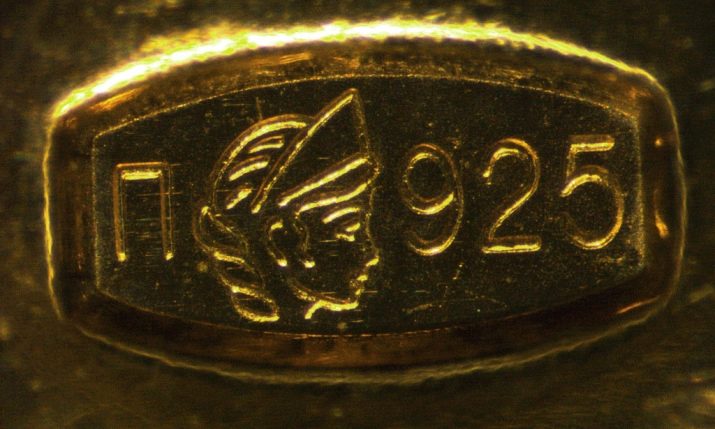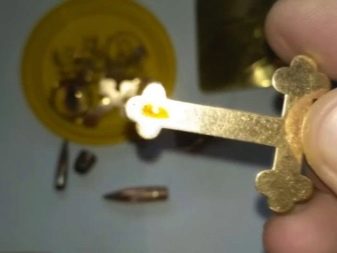The weight of the jewelry is designated by the special term “carat” (ct.). One carat is equivalent to 200 mg. The number of additives in the metal depends on the number of carats. The more carats, the cleaner the alloy. Gold is divided into 7 classes, depending on the ligature (additives).


What it is?
The definition of "carat" comes from the Arabic word qirat or Latin carat, which translates as "carob fruits." This name appeared in honor of the plant used in jewelry in the East. The ancient masters called the pods of the plant “curatonia”. The seed of this tree, due to its constant shape, served as a measure of the weight of precious stones.

The concept of “karate” was used to evaluate goods. This system was not very reliable, especially for international trade. In this regard, at the end of the XIX century, the value of one carat for all countries was determined - 205 mg. Later, in 1907, at a conference on measures and weights in Paris, a decision was made to correct 205 to 200 mg. Since then, this indicator has been in effect throughout the world. From Soviet times until 1994, the stigma (quality indicator) was enclosed in a five-pointed star with a sickle and a hammer.
The carat system (samples) is designed to evaluate the authenticity of gold. It represents a carat in the form of a non-metric unit for valuing precious metals. The amount of gold specifically in the alloy is indicated in carats.

In the United States and Europe, this gold rating system is mainly used. Many Russians and residents of the CIS countries in foreign trips purchase gold jewelry without stigma and probing, and indicating carats. Therefore, the question arises, what does karatness of gold mean.
It is known that in the jewelry industry, gold is never used without the addition of impurities. If this were so, then gold products without impurities would turn out to be very brittle, prone to deformation. In connection with this factor, gold would simply lose its popularity. Therefore, it is given wear resistance by adding any metals to the alloy, the so-called ligature. Estimating the authenticity of gold, the amount of this metal in the alloy is taken into account.

Therefore, carats do not denote the weight of precious metal, but the quantitative ratio of it to the additive in a particular product. The addition of different metals affects the color and cost of jewelry. Domestic alloys consist of a certain proportion of copper, and western ones - silver.
The metric system is adopted in Russia, Germany, Austria, Italy and the territory of the CIS countries. Karatnaya - in Switzerland and America, in the UK. Jewelers mark products on the inside with small stamps. According to them, the country of origin and quality of the alloy are determined.
Now the value of the product is not measured in grains. The maximum unit for reference is 24 carats, which is the highest sample rate - 999. In fact, this is a valuable metal without any additives. In the old days it was called pure and was considered the best.

Carat Standards
The cost of jewelry made of gold determines its share in 1 gram of alloy and the amount of impurities. 24K gold is considered the most expensive - pure metal of the highest standard, without impurities.


To determine how many grams in a particular product and its karate is possible, referring to a special table. According to the figures, the following relationships exist:
- 24K (carat) - corresponds to the 999th test, precious metal, which is considered the most valuable among jewelers;
- 22K - 916, 917 tests;
- 21 - 875 test, which means that 87.50% of gold is present in the alloy;
- 19K - 792 test;
- 18K - 750th test, valuable metal;
- 15K - 625 fineness, gold content - 62.50%;
- 14K - 585 standart, average quality;
- 10K - 417 samples, equal to 14K in value;
- 9K - 375 sample, refers to low quality;
- 8K - 333 samples.
In some countries you can find 23 carat gold items. There are no samples with a value less than 300 in the metric system, and less than 8 and more than 24 in a carat system (for example, 25). That is, the stigma of 25K or 7 indicates that this is a fake. Perhaps on top of the cheap alloy is simply applied with a thin layer of gilding.

Sample 16 is very rare, mainly on imported gold goods. 18 and 14K gold is preferred in Europe, and 9-carat gold is popular in Britain. In Portugal, 19.2 carat gold is found, which is unique and rare. Gold in 10, 14, 18 carats is more popular in America, in Asian countries (particularly in India) - 22 carats (23 are also found), in China they prefer to purchase products marked 24 carats.
The higher the percentage of gold in the alloy and its value in carats, the brighter the color of the product and the higher the price per gram.

Carat Sample System
Gold purity is determined by carat and metric systems. Punishment is calculated by the percentage of pure gold. The carat system is applicable in the UK, America, Switzerland and other European countries.
The purest alloy is 24 carats. To calculate the amount of ligature, it is necessary to take away karate from 24. 9K contains the same amount of gold and 15 remains on additives.
In Russia and the CIS, the metric type of designations is used. According to it, the amount of gold without ligature per 1000 particles is determined. Sample 750 contains the same amount of gold and 250 additional particles. It turns out that every kilogram of this sample will contain 750 g of gold and 250 g of additives. The system was introduced in 1927 and is currently valid.

The metric system includes 375, 500, 585, 750, 900, 916, 958 samples. The carat system: 24, 23, 18, 14, 12, 9. To understand what these numbers mean, you should compare the two systems according to a special table.
A gold sample is its amount in grams per 1 kg of alloy.Suppose a breakdown of 585 means that 1 kg of alloy has a minimum of 585 g of gold.

In a carat system, 1000 grams of alloy will correspond to 24 carats. This is an indicator of pure gold. If the gold product has the stigma 18, this means that the alloy contains just as many carats of pure gold. To understand how many grams of a noble metal such an alloy contains, you need to divide 18 by 24 and multiply the result by 100. In this case, you get 750 grams, which implies that 18 carat gold is an analogue of a precious metal of 750 samples.

Each certified jewelry product sold in the Russian Federation and the CIS must have a mark and a test. If there is a stamp with the number of carats on the jewelry, then such a product is most likely of foreign origin, and the risk is high that it is fake. According to statistics, over 70% of foreign jewelry sold in the jewelry market of the countries of the former Soviet Union are counterfeit. For this reason, it is recommended to purchase products with a stigma and breakdown, rather than indicating carats.

How to check product cleanliness?
Gold jewelry is usually marked with a carat value. In the absence of samples and stigma, or if necessary, check the purity of the product, you can use various methods.

Acid testing
Performed by a master in most jewelry stores. The product is scratched and a little acid (mainly nitric acid) is applied to this place to obtain a chemical reaction. It determines the size of the carat. You can independently test using a special kit with nitric acid in the kit.
The test is usually performed as follows.
- Scratch the product slightly on the side that is not visible.
- The kit comes with bottles of acid of different concentrations, indicating the number of carats on each label. It is necessary to drop acid from the bottle with the lowest number on the scratch and evaluate the reaction.
- If the carat of the alloy exceeds that indicated on the label, the color of the metal at the mark will remain unchanged. In this case, you need to repeat the procedure by applying acid from the bottle with the next lowest number.
- If the carat and the number on the label coincide, the place of the label will slightly change its color. If the jewelry is less than 1-2 carats, the mark will slightly rust, but will remain.
- If the carat is more than one unit lower than that indicated on the label, the mark will dissolve and disappear.
Before starting acid testing, it is important to carefully read the instructions that came with the kit. The exact procedure may not coincide with the method described above.




Other ways to check alloy purity
There are metal cleanliness checks that have become popular. But, despite this, they are useless.

You should not bite a gold product, although they say that this is a good way to determine the authenticity of gold. Not only is it a soft metal, there are other soft alloys that are simply coated with gilding. This is often used by dishonest sellers of fakes.

It is also believed that gold does not attract a magnet, which proves its purity and authenticity. At the same time, there are many alloys that also do not respond to the magnet. They can only be gilded.

The best way to determine the purity of a product is to check the acid at the mark.
How to determine the gold in the rock, you can see in the next video.










